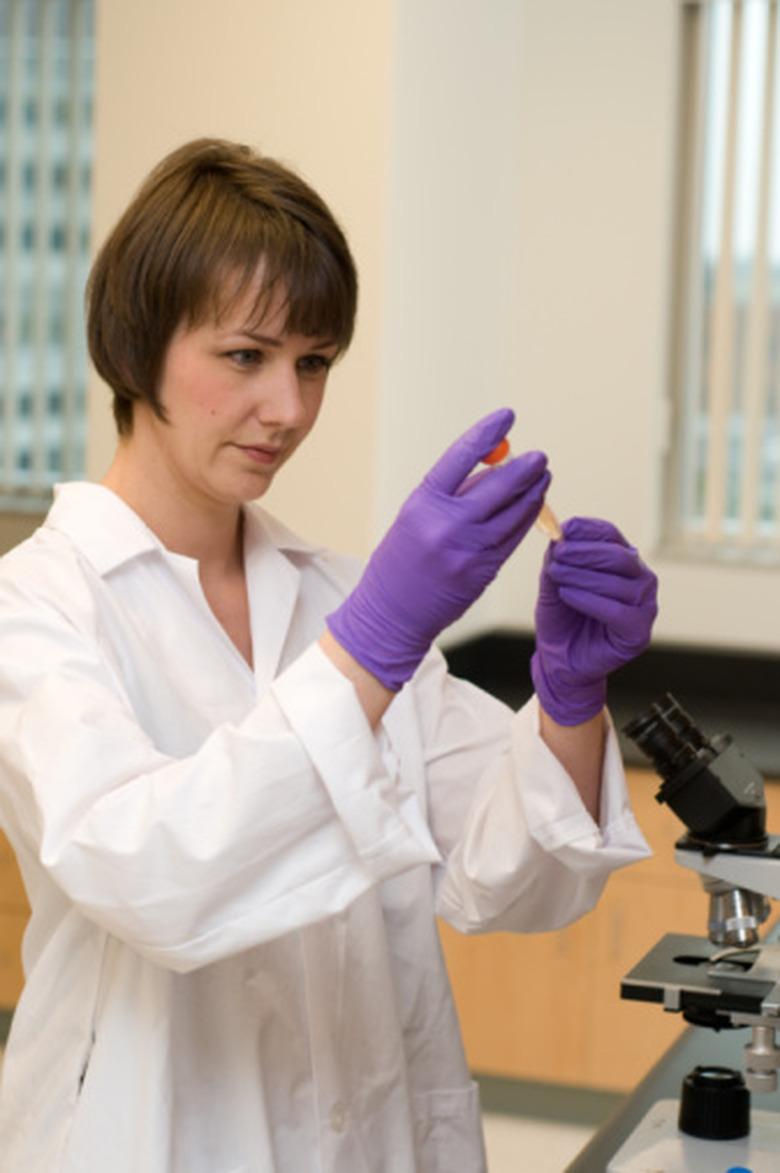Science Experiment To Test Electrolyte Levels In Sports Drinks
Beverage companies make millions each year by touting the power of the electrolytes in their drinks which, according to them, have the ability to replace the electrolytes that you lose during exercise. Electrolytes are atoms that separate into ions, such as sodium and potassium, in solution. Since these ions have the potential to conduct electricity, electrolytes are indispensable for the proper functioning of your cardiovascular and nervous systems. Thus, a science project comparing the electrolyte levels of different sports drinks, by using conductance, which is proportional to electrolyte concentration, is exceedingly valuable.
Materials to Measure Electrolyte Levels
Materials to Measure Electrolyte Levels
To measure the levels of electrolytes in terms of conductance, you will be starting from the equation, G = I/V, in which 'G' is the conductance, referring to how easily electricity passes through the solution, 'I' is the current running through the solution, and V is the size of the voltage source that led to the current. You will be using an ammeter, which you can obtain easily from an electronics store, to measure the current. You will need a voltage source (i.e., a 9V battery), materials to build your "conductance sensor" — copper wires and plastic tubing — wires with alligator clips to complete the circuit, and bowls to hold your electrolytes.
Experimental Setup
Experimental Setup
Setting up your experiment is not difficult. Create your conductance sensor by cutting 6 inch lengths of copper wire and wrapping the wire around your plastic tubing in coils, until only about 2 inches of the copper wire remain. Connect one of the wires on the conductance sensor to the positive terminal of the battery, using wires with alligator clips, and connect the other wire on the conductance sensor to the multimeter. Set the multimeter to read direct current. So far, you have constructed an open circuit, because of the distance between the two copper wires on your conductance sensor. When you immerse your conductance sensor in the electrolyte solution, electrolyte current will connect your copper wires, thus closing the circuit.
Experimentation
Experimentation
Firstly, use the conductance sensor to read the current levels in distilled water. Since we do not expect distilled water to contain electrolytes, we would expect distilled water currents to be exceedingly low, so the distilled water functions as a control. Use a 1/2 cup measure to pour out 1/2 cup of distilled water into a bowl. Into other bowls, pour out 1/2 cup measurements of different sports drinks. Place the conductance sensor into the distilled water, read and record the current, then read and record the currents through the sports drinks. In between each sports drink, rinse the conductance sensor in distilled water in order to prevent drinks from skewing the results of subsequent samples.
Data Analysis
Data Analysis
You should subtract the current that you read from the distilled water from the currents that you read from the sports drinks, if the distilled water current differed from 0 Amps. Convert all your current readings into Amps (from microamps or milliamps), and calculate the conductances of different sports drinks from the currents that you measured, experimentally. Interesting future experiments could involve experimentally determining the conductance of other beverages, such as milk, beer, and lemonade, and comparing them to that of sports drinks.
Cite This Article
MLA
Lobo, Tricia. "Science Experiment To Test Electrolyte Levels In Sports Drinks" sciencing.com, https://www.sciencing.com/science-electrolyte-levels-sports-drinks-7969703/. 24 April 2017.
APA
Lobo, Tricia. (2017, April 24). Science Experiment To Test Electrolyte Levels In Sports Drinks. sciencing.com. Retrieved from https://www.sciencing.com/science-electrolyte-levels-sports-drinks-7969703/
Chicago
Lobo, Tricia. Science Experiment To Test Electrolyte Levels In Sports Drinks last modified August 30, 2022. https://www.sciencing.com/science-electrolyte-levels-sports-drinks-7969703/
